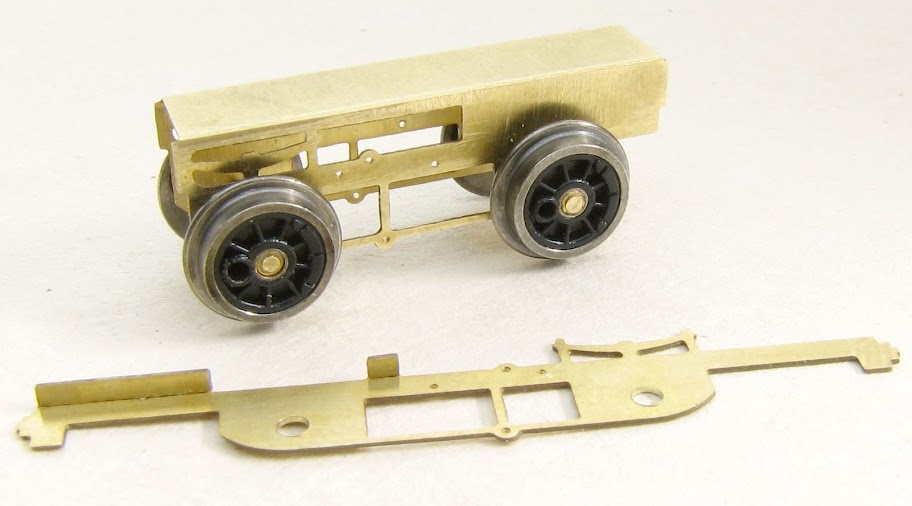The plans were scaled to HO and then imported into AutoCAD where I basically traced over them to create artwork for etching. This was the first test etch I came up with.

The drivers are 7mm and from a N scale Atlas/Micro Ace 2-6-0. 2 of the drivers needed to be bored out to 1.5mm while the other 2 drivers were bored to 2mm for bushings. The insulator bushing were then lathed down to a 2mm od.
Here are more porter parts.

And now with the cab sides soldered together.

This is where things sit right now.

This is a pretty small locomotive at about 2" long and 1" wide. The finished locomotive will have a "tender" that is slightly smaller than a stock porter item. It will have parts from a Kato truck that will let it have 4 wheel axle point frictionless electrical pick-ups.
More later...
1 comment:
Could you PLEASE share your etching knowledge? It would be a crime to keep such skill a secret. Seriously. I cannot believe what you do in N scale, and I model in On2.
Amazing.
Chris Cardinal
twofoot at comcast.net
Post a Comment